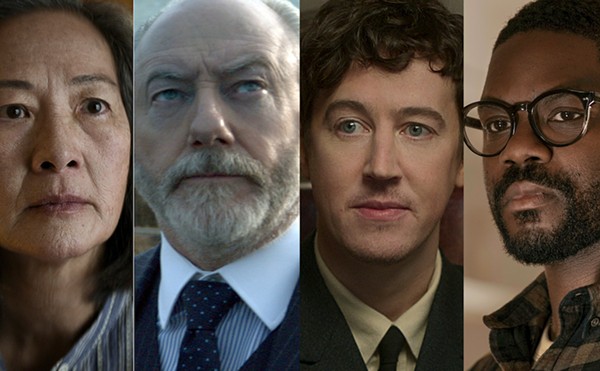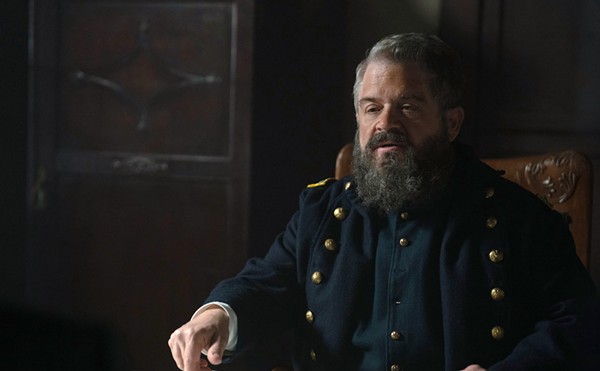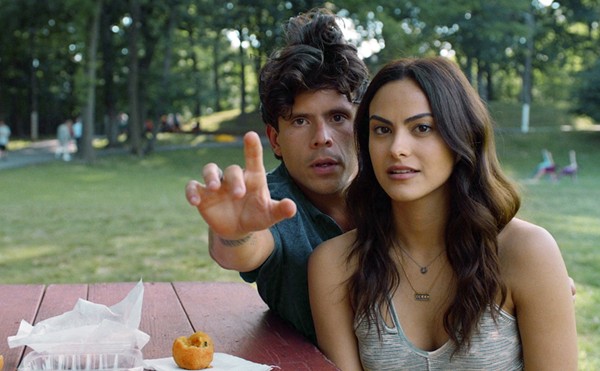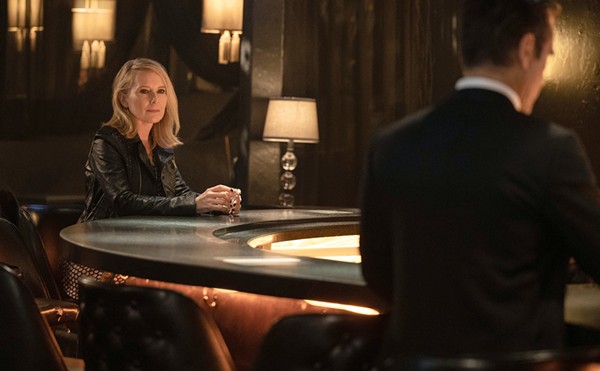It could have been terribly depressing. But Sundance Grand Jury Prize-winning Winter’s Bone, based on Daniel Woodrell’s novel of the same title, is just plain compelling. In an impoverished community of insiders in the Ozark Mountains, Ree spends her days caring for her virtually comatose mother and young siblings. But things become more complicated when she must doggedly pursue her absent — possibly dead — meth-cooking father in order to save the family home. Primitive bonds of kinship and loyalty come into play as her uncle, “Teardrop,” abets her and community members lay on the hurt to preserve secrets. Director and co-writer Debra Granik spoke to the Current by phone.
Tell me about your process of adapting the novel.
The adaptation process was technically very easy because Daniel Woodrell’s novel is extremely cinematic and really beautifully written in terms of detail and describing what Ree’s life was like … the kind of house she lived in, how she raised her siblings, what they ate. So there’s a huge wealth of information in his book. However, because we have no personal life experience in that region whatsoever, the process of adaptation had to begin with going down to meet him, going to locations that had inspired him and seeing for ourselves what the housing-stock looked like in the area. … This led us to a process of working with a local man who was held in very high regard in a particular community; he was very trusted by his friends and neighbors. He introduced us very methodically, very much by permission, where we were allowed to meet with families in a specific area, and introduce them to the idea that we were eager to communicate and really put forward what the content of the novel was — its difficult aspects, its good qualities, its troubling qualities, and basically run that by people and say, “If the film were to be made here, What would you want from it? What do you think it needs to say?” In the end, we had a very rich discussion going over a period of like five or six visits over two years in which, in some ways, through a consensual process we felt like that story was indeed worth telling and that Ree’s life could be depicted in great detail. … In the end, we had almost a council of local advisors who were working with us closely.
What was that like for you as a director?
That was very exciting because, first of all, it does raise the stakes. You don’t want to disappoint people if people put a lot of effort in. I think one thing that many directors feel is that filmmaking is so collaborative. You have so many people who are putting their artwork into the film, from the costumes to the DP — the cinematography — and then you get all these local people that take a risk on your film, putting in their costumes. They contribute their pets; they’re allowing you to shoot in their homes, and the stakes just get higher and higher. All you want in the end is for the people who put this stuff in to find it worthy.
The set and setting I was incredibly impressed, because to me, not having been there before, it looked incredibly authentic and not art-directed.
The endowment of this film is we were given intense access to objects and places and personal details, so that the little girl who plays Ashley `Ree’s little sister`, that’s actually the house she lives in. So those are her toys: Brownie and Cupcake are her ponies; the trampoline is hers. … So, what happened in this film was, once we were given this kind of access and allowed to film visual details that were from a lived existence, the art department wanted to work that way. The costume department wanted to do a clothing exchange. … This wasn’t some lofty idea that we came in with — this was something that grew out of the actual production. … Some of the art department’s art was that they could be more like curators.
The women in this movie are so intense — not just Ree `Lawrence`, who is such an Antigone, which I’m sure you keep hearing over again — but for me, it was so foreign to have the women being the ones who really put the hurt on. Tell me a little about that.
You know, I would say that Daniel wrote very strong women in the novel, and that’s something that I always like to acknowledge, because I felt like he was picking some very powerful traits from literature and ascribing them to Ree. You make the Antigone reference, which I always really relish when people acknowledge that because he even wrote a line, so it’s very on point, really. You know, Merab — played by Dale Dickey — also a very strong character, she adjudicates a certain form of justice from the family. Though the protocol might be, it may seem like it’s kind of in service to listening to the patriarch, she makes her mind up about how she’s going to proceed, and she ultimately takes matters into her own hands. I think why I really liked her is because she’s a difficult character, and she does the wrong thing initially, but I love that she has enough reflexivity — she has a conscience. Ree’s naked pleas do get under her skin. … Once meth infiltrates a family, it really messes up loyalty systems, it messes up kinship systems, it causes suspicion, it raises the stakes, it corrupts people.
John Hawkes `as Teardrop` was really wonderfully ambiguous; I would love for you to extrapolate on working with him and that character. I just didn’t know whether he was going to kill you or take care of you.
He really went to town with that. He’s often been cast as very mild, a very gentle person — which he is actually. He read Daniel’s words very carefully, and he was interested, and something that he said is that he is intrigued by characters that do not change. People feel like Teardrop changes, and he said, no, it’s people’s opinion of Teardrop that changes. He doesn’t have a capital R Redemption; he doesn’t have an epiphany where he becomes a better man. Teardrop is plagued by demons, one of them being that he is clearly prone to chemical dependency. … John really recognized that his help comes at such a great price; his help can really be unhelpful, and yet he wants to ultimately do the right thing by his niece.















